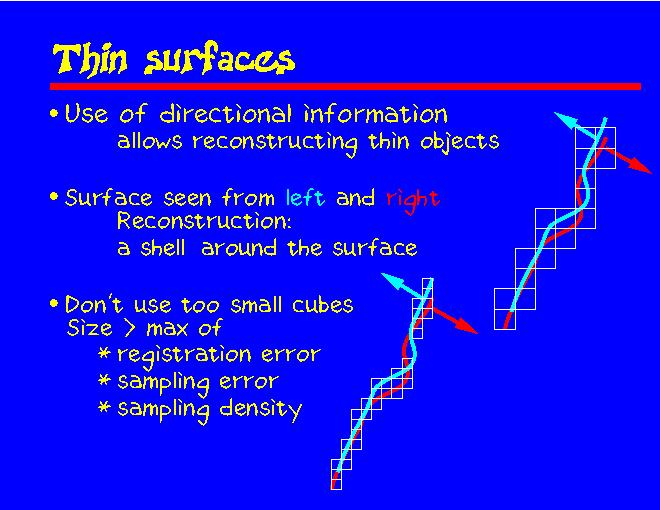Click slide for next, or goto previous, first, last slides or back to thumbnail layout.

Click slide for next, or goto previous, or back to thumbnail layout.
Click slide for next, or goto previous, first, last slides or back to thumbnail layout.

Click slide for next, or goto previous, or back to thumbnail layout.
Methods that rely on estimating a signed distance function, such as the Hoppe etal '92 method or the Curless & Levoy '96 method have problems with reliably extracting thin surfaces. The distance is positive almost everywhere, which makes zero set extraction unreliable.
This slide shows how our method deals with that. On the right a thin surface was scanned from both left (light blue) and from right (red). The space is carved from the left until close to the light blue surface, and similarly from the right until the red surface. What remains is a thin layer of cubes straddling the surface, and its outer boundary provides a reasonable estimate of the surface.
The image below shows that the data contains errors, the processing shouldn't be taken to too fine level of resolution. Here the data is misregistered so that the dents in the surface don't align but the surface from one side protrudes to the front the surface on the other side. Now when the space is carved from the left, the cubes are removed until the blue surface, past the red one, and a similar thing happens from the other side, creating a hole. These problems don't happen if one doesn't use cubes that are smaller than the estimates of the errors due to registration and sampling.
[I removed this slide to keep the talk short.]